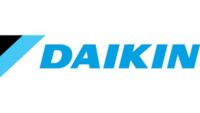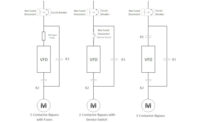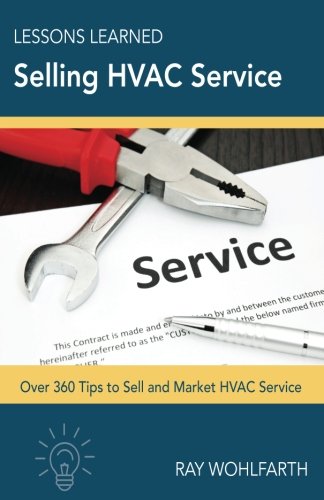High Temperature Heating and Ventilation (HTHV) technology is one of the most energy-efficient ways to heat a high-bay building, providing lower energy cost for the building owners or tenets. As a 100% outside air technology, HTHV delivers fresh and healthy air where needed. Many times, depending on the building, HTHV provides enough outside air to satisfy the ASHRAE 62.1 requirement of fresh air during occupied hours.
At times, HTHV and other highly efficient heating technologies can have higher upfront equipment costs compared to less efficient technologies. To help buffer the initial investment, there are many rebate options available from both the federal government and natural gas utilities.
Natural gas utilities across the U.S. provide both custom rebate programs and prescriptive rebates to assist in offsetting the costs. Utilities, such as Ameren in Illinois and Dominion Gas in Utah, provide natural gas prescriptive rebates of $6 per Mbh. For example, a natural gas customer can receive a rebate of $6,000 for a building requiring 1 MMBtu to heat the facility. Many times, utilities will create a custom program that leads to even more upfront savings. So, partnering with the utility company can be beneficial and is well worth the research.
There are also federal programs that provide financial incentives to install energy-efficient HVAC technologies.
-
Rural Energy for America Program (REAP) provides financial assistance to agricultural producers and small businesses in rural America to purchase, install, and construct renewable energy systems and make energy efficiency improvements to nonresidential buildings and facilities. REAP is managed by the U.S. Department of Agriculture and is available in all 50 states.
-
EPAct 179D Deduction – The 179D Energy Policy Act certification calculates the tax deduction achieved from the installation of energy-efficient assets, including HVAC, building envelope, and lighting. The building may qualify for up to $1.80 per square foot ($0.60 per square foot for each system). The deduction is available for newly constructed or renovated commercial buildings as well as apartment buildings that are four-stories high or taller.
-
Abandonment Study – When a building demolition or renovation is undertaken, the HVAC units are torn out along with other components. These units and components are typically abandoned or retired from the building. As such, their book value can be treated as a business deduction. The tangible personal property within the structure (or a part of it) allows for the remaining depreciable value (or basis) to be written off when the asset is retired.
Cambridge HTHV Commercial Warehouse Case Study
Building type:
- Commercial warehouse;
- 108,000-square-foot existing building bought in 2016;
- 100,000 square feet in new construction;
- Replacing old heaters in warehouse in the 108,000-square-foot warehouse with HTHV heaters; and
- New construction of the 100,000 square feet will be fitted with HTHV heaters.
Qualifying Deductions:
- EPAct 179D HVAC Deduction – $124,800;
- Abandonment study – $ 97,567; and
- Total deduction – $222,367. (Due to the high energy efficiency of the HTHV heaters, per ASHRAE Standard 90.1-2007, the required 50% reduction was accomplished solely through energy and power cost reductions for the heating and ventilation. This enabled the property owner to receive the $.60/square foot deduction.
Cambridge Air Solutions HTHV Technology
- 10 models ranging from 1,200-14,380 cfm;
- 160°F maximum rise and discharge temp provides energy efficiency;
- Exceeds DOE’s 90% high-efficiency, gas-fired technology standards;
- Up to 3.2m Btuh;
- High 10:1 induction air mixing ratio minimizes stratification;
- 100% outside air provides superior ventilation and IAQ;
- Blow-thru space heating technology provides maximum amount of Btu per cfm;
- Improved air temperature uniformity due to superior destratification without supplemental fans; and
- 92% ultra-high efficiency resulting in energy savings and better indoor comfort.
If heating a high-bay building is a concern, HTHV technology is among the most energy-efficient solutions for these types of structures. To learn more about the energy efficiency and destratification of HTHV technology, visit www.cambridgeair.com.







